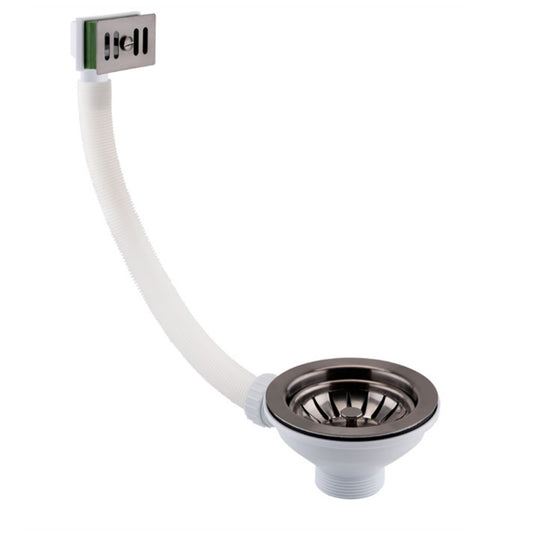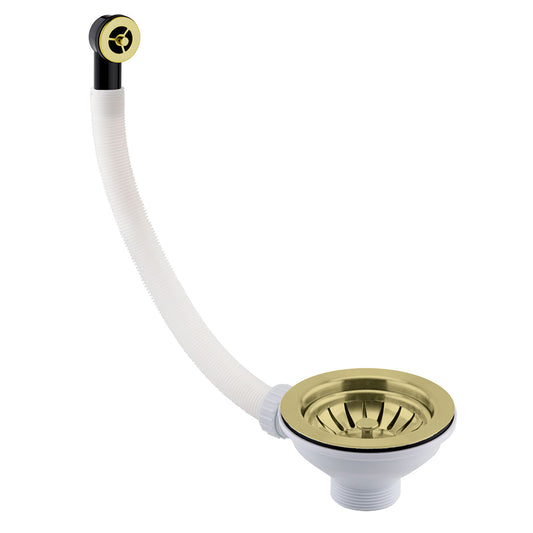How Does My Kitchen Sink Drain to the Sewer? Unveil the Secret!
Table Of Contents:
-
Does My Kitchen Sink Drain to the Sewer? Understanding Your Plumbing System
-
The Role of Plumbing Systems
-
An Overview of the Article's Exploration
-
How Does Your Kitchen Sink Drain Work?
-
The Importance Of Traps And Traps Seals
-
Understanding the Connection to the Main Plumbing System
-
Dealing with Common Issues
-
Maintenance and Prevention Tips
-
Consulting a Professional Plumber
-
Conclusion
-
FAQ Section
Does My Kitchen Sink Drain to the Sewer? Understanding Your Plumbing System
The Curiosity About Kitchen Sink Drainage
When you wash dishes or pour water down your kitchen sink, have you ever paused to wonder, Does my kitchen sink drain to the sewer?
This is a common question many homeowners ask. The kitchen sink is one of the most used fixtures in your home, and understanding how its drainage system is linked to the sewer is crucial for proper maintenance and troubleshooting.
In this article, we'll explore the path from your kitchen sink to the sewer and how to keep this essential system running smoothly.
The Role of Plumbing Systems
Understanding how your plumbing system functions is essential to appreciate the journey of water and waste from your kitchen sink.
Plumbing systems are a network of pipes, traps, and fixtures designed to transport water and waste to appropriate locations while maintaining airtight seals to prevent sewer gases from entering your home.
An Overview of the Article's Exploration
We will start by examining how your kitchen sink drain works, highlighting the crucial components such as traps and trap seals.
Then, we will delve into common issues like kitchen sink odours, blockages, and clogs, along with disposal practices and maintenance tips.
Additionally, we'll discuss when it's necessary to consult a professional plumber and the benefits of doing so.
How Does Your Kitchen Sink Drain Work?
The Journey of Water and Waste
When you use your kitchen sink, water and waste flow down the drain and into a system of pipes.
These pipes are designed to transport the waste away from your home to a central sewage system or a septic tank, depending on your property's setup.
The journey begins as water and waste pass through a curved pipe known as a trap.
The Importance of Traps and Trap Seals
Traps are essential components of your kitchen sink drainage system. They are designed to create a water seal, also known as a trap seal, within the curved pipe.
This seal prevents sewer gases, which can carry unpleasant odours and even health risks, from entering your home.
It acts as a barrier, ensuring that only water and waste flow through the pipe while maintaining a safe and odour-free environment in your kitchen.
Understanding the Connection to the Main Plumbing System
Your kitchen sink drainage system is connected to the main plumbing system of your home.
The main plumbing system is responsible for transporting waste from all fixtures in your house, including toilets, showers, and sinks, to the sewer or septic tank.
This network of pipes ensures that waste is safely carried away from your property and properly treated or disposed of.

Dealing with Common Issues
1. Kitchen Sink Odours and Their Causes
One common issue that homeowners may encounter is unpleasant odours emanating from their kitchen sink.
These odours can result from a variety of causes, including the accumulation of food particles, grease, and debris in the pipes. In some cases, the trap seal may fail, allowing sewer gases to enter your kitchen.
2. Blockages, Clogs, and Disposal Practices
Another challenge that homeowners face is blockages and clogs in their kitchen sink drain. These blockages can occur due to the improper disposal of food scraps, coffee grounds, and grease. Over time, these substances can accumulate in the pipes, restricting the flow of water and leading to backups.
Maintenance and Prevention Tips
To maintain a healthy kitchen sink drainage system, it's essential to adopt proper usage and regular maintenance practices.
Avoid disposing of large food particles and grease down the drain, as these can contribute to blockages.
Consider using a drain strainer to catch food particles before they enter the pipes. Additionally, periodic flushing with hot water can help prevent grease buildup.

Consulting a Professional Plumber
When to Call in a Plumber
While many kitchen sink drainage issues can be resolved with DIY methods, there are situations where it's best to consult a professional plumber.
If you encounter persistent odour issues, frequent blockages, or suspect problems with the trap seal, it's advisable to seek expert assistance.
Plumbers have the knowledge and tools to diagnose and address complex plumbing issues effectively.
Benefits of Professional Assessment
A professional plumber can conduct a thorough assessment of your kitchen sink drainage system.
They can identify and address any underlying issues that may be contributing to odours, blockages, or other problems.
Additionally, plumbers can perform maintenance and repairs to ensure the longevity of your kitchen sink drain.
Conclusion
In conclusion, the question Does my kitchen sink drain to the sewer? is answered with a definitive yes. Your kitchen sink is an integral part of your home's waste disposal system, connecting to either the municipal sewer or a septic tank.
Regular maintenance and proper use are key to keeping your kitchen sink's drainage system in top condition. Should you face persistent issues, don't hesitate to call in a professional plumber for expert advice and repair.
By understanding and caring for your kitchen sink drain, you can ensure a functional and hygienic kitchen environment.























































